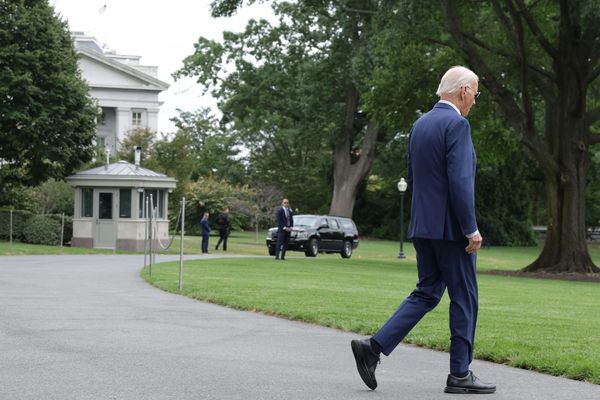West Australian researchers say the Abrolhos painted button-quail is likely to be extinct from a WA island due to predators and climate change.
A quest to learn why the sub species of button-quail was under threat took masters student Ryan Carter on a three-year research project investigating bird life off WA's Mid West coast.
"We just wanted to find a bit more information about it and why it's under threat and what are some driving forces behind that," Mr Carter said.
The Abrolhos painted button-quail is a small ground-dwelling bird found only at the Houtman Abrolhos Islands.
Mr Carter said the button-quail was not easy to spot, often found hiding in bushes.
He said the bird's discreet nature made it difficult to track the number of button-quails living on North, East and West Wallabi islands.
"It's quite difficult to see, it's not a typical bird that sits on a branch and sings and everyone can see it," he said.
Mr Carter said his research team deployed camera traps at the three islands hoping to catch a glimpse of the quails.
About 13,000 camera trap nights failed to capture any sightings of the bird on the North Island.
Department of Biodiversity, Conservation and Attractions principal research scientist Allan Burbridge said the probability of the species existing on that specific island was low, as it had not been sighted since 2006.
"We certainly think they are extinct on North Island," Dr Burbridge said.
However, camera sightings were able to confirm the birds were still living on the East and West Wallabi islands, but not many.
"The cameras were really effective at picking the birds up," he said.
"The detection rates that we've been getting of the bird is very low compared to some other birds found on the island."
Why are they declining
A major objective of the study was determining why the bird population was declining or possibly already extinct at the islands.
A study completed by researchers at Australia's Threatened Species Recovery Hub in 2018 identified the Houtman Abrolhos painted button-quail as the fifth most likely bird at risk of extinction within the next 20 years.
"From our findings, the detection rates that we've been getting of the bird is very low … I would have confidence saying that there's not many left," Mr Carter said.
Mr Carter and his research team analysed potential threats facing the button-quail, including invasive mice, introduction of other species such as tammar wallabies, and reduced rainfall.
"We've got house mice, which have been introduced to the island and from our cameras, we've pretty much detected them everywhere across the island," he said.
"So, what the wallabies have done is over-graze the vegetation, trample [the vegetation], ringbarked a lot of the plants, this has reduced the overall cover on the island.
"For a small ground-dwelling bird like the quail, this is what they inhabit, so it obviously puts them in danger."
Mr Carter said tammar wallabies were at their peak and annual rainfall was near its lowest level at the time of the last button-quail sighting in 2006.
"We've shown rainfall decline on the island over the past 20 or so years and that's correlated quite highly with the declining vegetation cover," he said.
Future of the button-quail
Mr Carter said he hoped his findings would be key to preventing further decline of the button-quails
"There's increasing numbers of people going to the Abrolhos as you know, so what that does mean is there's a need for raising awareness amongst visitors," he said.
Mr Carter said identifying what had caused the decline was pivotal, as the loss of a species had a flow-on effect to an ecosystem.
"Finding out that the mice and tammars have had an impact on this bird, we can then implement management decisions that can hopefully eradicate these mice and reduce these tammars' impacts on the islands," he said.
"Everything has a role to play in an ecosystem, everything is food to something."
Dr Burbridge said Mr Carter's research had been used to help build the Abrolhos Islands National Park Management Plan.
"Some of that information that Ryan was finding out at the time was provided to the people who were writing the plan," he said.
Mr Carter said his findings could help influence future management of the bird life at the Abrolhos.
"It emphasises the importance of biosecurity," Mr Carter said.
He said mice were on North Island but there were no invasive rodents on the other two islands.
"That's a priority now that those two other islands don't have invasions," he said.







